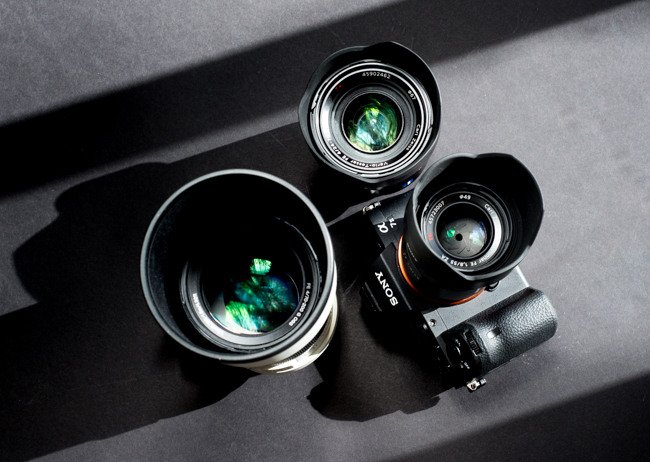
If you ever get the chance to speak to a NASCAR team engineer, or the maintenance guys who work on fighter jets, a recurring theme you’ll hear – if you read between the lines – is that the average driver or pilot doesn’t know how the machine they control does what they make it do. The drivers and pilots know how to implement the tool and skillfully deploy the machine, but not necessarily what goes into building and fixing one. It reminds me, in a way, very much of photographers and their gear. The best of us know how to take the tools we’re given, learn the functions, and then deploy them in-field, or on set. What most of us don’t know, is just how much has gone on before we get our hands on it.
Despite what sporadic camera news will have you thinking, the modern camera is an absolute marvel of build and engineering. They’re made of advanced materials, thousands of parts, take abuse, and they just work. When you buy a modern camera now there’s no trepidation that it won’t, because it will, and they do. Of course the pedantic among us will point out some D750 issue or this or that sensor issue, but the fact is, you could leave your camera alone for a year (as I have done), and with not so much as a light dusting it will work when you pick it up again. I say this because I think many of us take it for granted.

In that vein, another thing we take for granted is how much technology is being deployed in our cameras and lenses, and sometimes it’s tech you can’t see, like lens coatings. If you’ve ever ventured to learn more about lens optics you’ll surely have hit upon the importance of coatings, and in a way, it is coatings that have allowed for the development of the multi-element and high-functioning zooms we have today. Let me explain…
As light enters any given lens, it hits multiple surfaces, and even if it were to simply hit the glass elements, it’s accepted that somewhere between 3-8% of light transmission is lost on each lens surface. So naturally, if you’ve got some complicated zoom that’s a layer-cake of elements, you could lose large percentages of your light transmission by the time it passes through them all to hit the sensor/film. I caution you not to necessarily think of this as lowering the brightness value, because 50% loss of transmission doesn’t necessarily mean the image will be 50% darker. I won’t get into it too technically right now, but suffice to say some of the things the lowered transmission will bring is cloudier, less contrasty, less saturated images, and very obviously so. You could even have images where certain colors are more or less pronounced, and have more flares and ghosting. It is lens coatings that have dispensed with much of this, and Zeiss has been leading the pack. In fact, Zeiss’ coating is sort of their signature dish.

If you’ve owned a Sony camera in the last 5 years, or any high-line of Zeiss glass like Batis or Otus, you’re familiar with that little orangey-red T* that is proudly, if humbly displayed somewhere on the lens. That is the Zeiss T Star designation for its antireflective coating, and it’s rather special.
*Recommended reading: There’s Zeiss Lenses & Sony/Zeiss Lenses, So What’s The Difference?
Zeiss, in fact, first began making lens coatings in the 30s, making them the first optics company to apply them on the front and rear surfaces of their lenses. This coating, like others now, is there for the purpose of guiding the most amount of light transmission through a lens, and Zeiss say it’s somewhere north of 95%, and what that means for us, the simple photographer, is we get crisper, more contrasty, richer images, and all thanks to something we can’t even see is there, and often take for granted.

Zeiss has released a technical document that breaks down and dives into the details of how T* coating works, and how much work it actually does. It’s incredible really. They have images that show images taken with a lens with and without the coating and once you see those you’ll likely never look at these coatings with any amount of indifference again.
The paper is called “About the reduction of reflections for camera lenses: How T*-coating made glass invisible” and can be found here. It’s a lengthy read, but if you’re a bit of a techy, you may find appreciation for it. We’ve long been loving Zeiss glass like the Otus 85 or the Otus 55, and this just makes it even more so.
[REWIND: There’s Zeiss Lenses & Sony/Zeiss Lenses, So What’s The Difference?]
You can see our review of the Zeiss Otus 55mm 1.4 here, and the Sony Zeiss 24-70mm f/4 here. Check our the entire technical document here.





Get Connected!